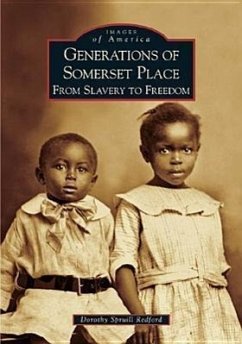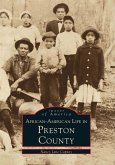When the institution of slavery ended in 1865, Somerset Place was the third largest plantation in North Carolina. Located in the rural northeastern part of the state, Somerset was cumulatively home to more than 800 enslaved blacks and four generations of a planter family. During the 80 years that Somerset was an active plantation, hundreds of acres were farmed for rice, corn, oats, wheat, peas, beans, and flax. Today, Somerset Place is preserved as a state historic site offering a realistic view of what it was like for the slaves and freemen who once lived and worked on the plantation, once one of the Upper South's most prosperous enterprises.
Hinweis: Dieser Artikel kann nur an eine deutsche Lieferadresse ausgeliefert werden.
Hinweis: Dieser Artikel kann nur an eine deutsche Lieferadresse ausgeliefert werden.








